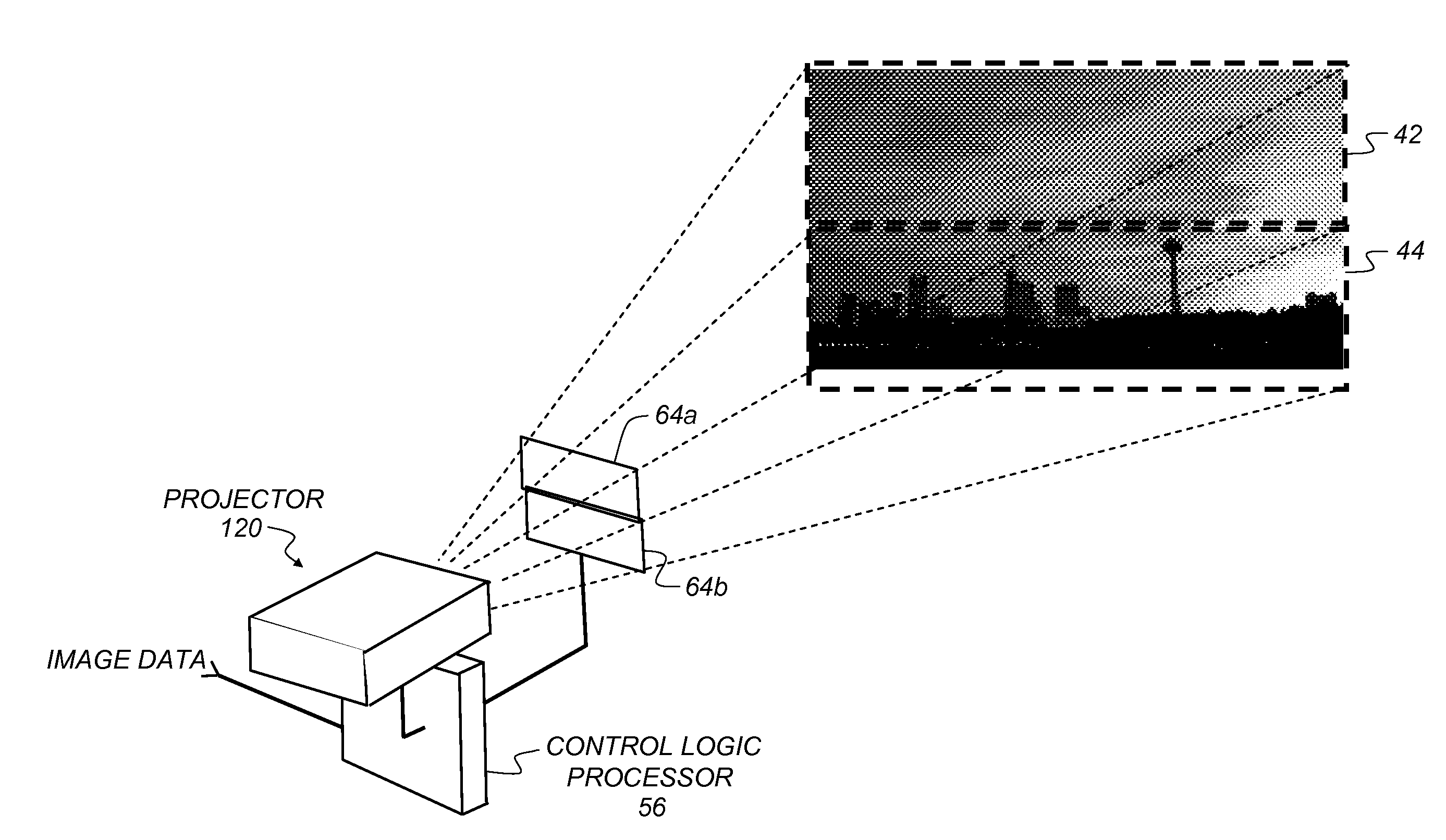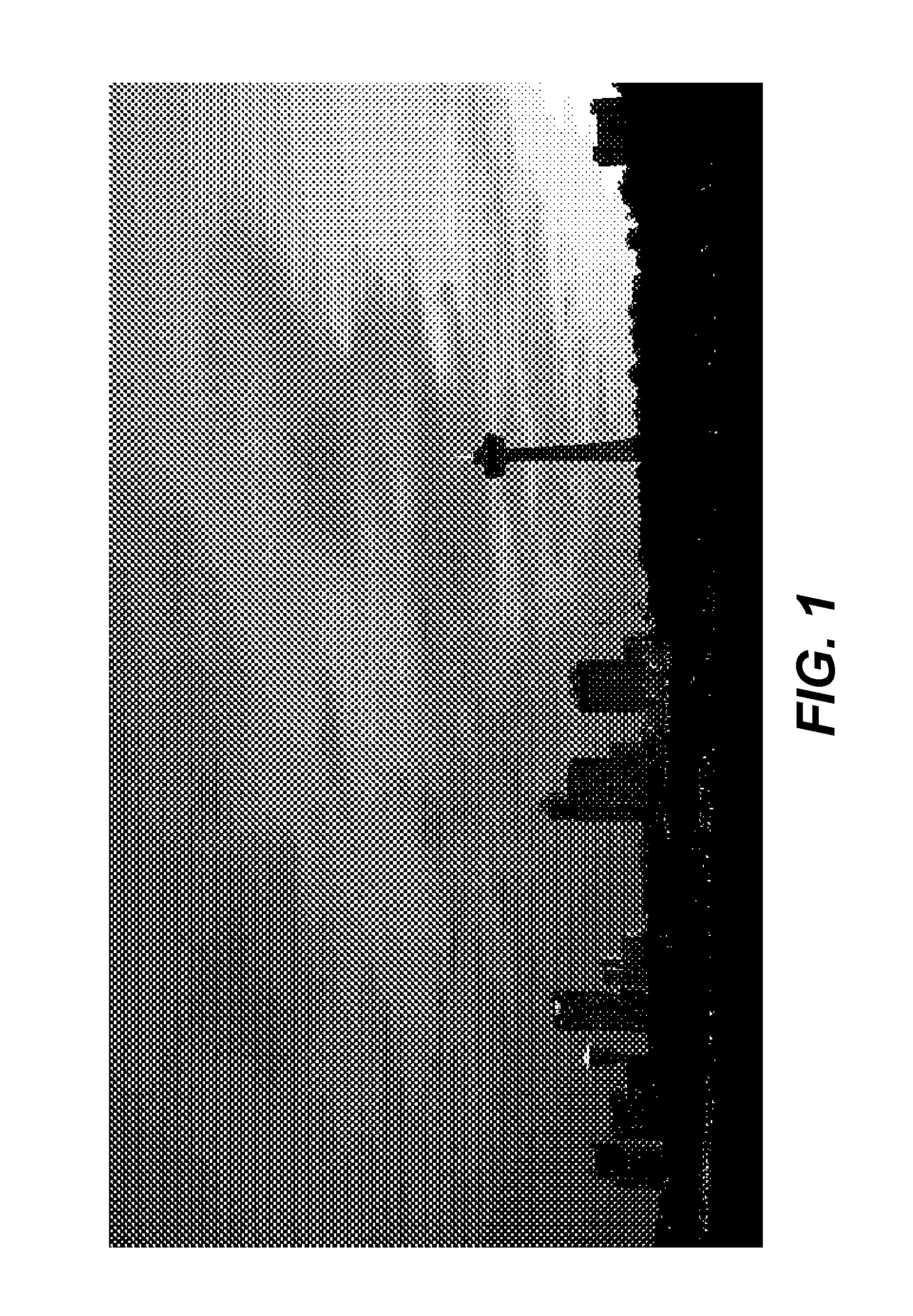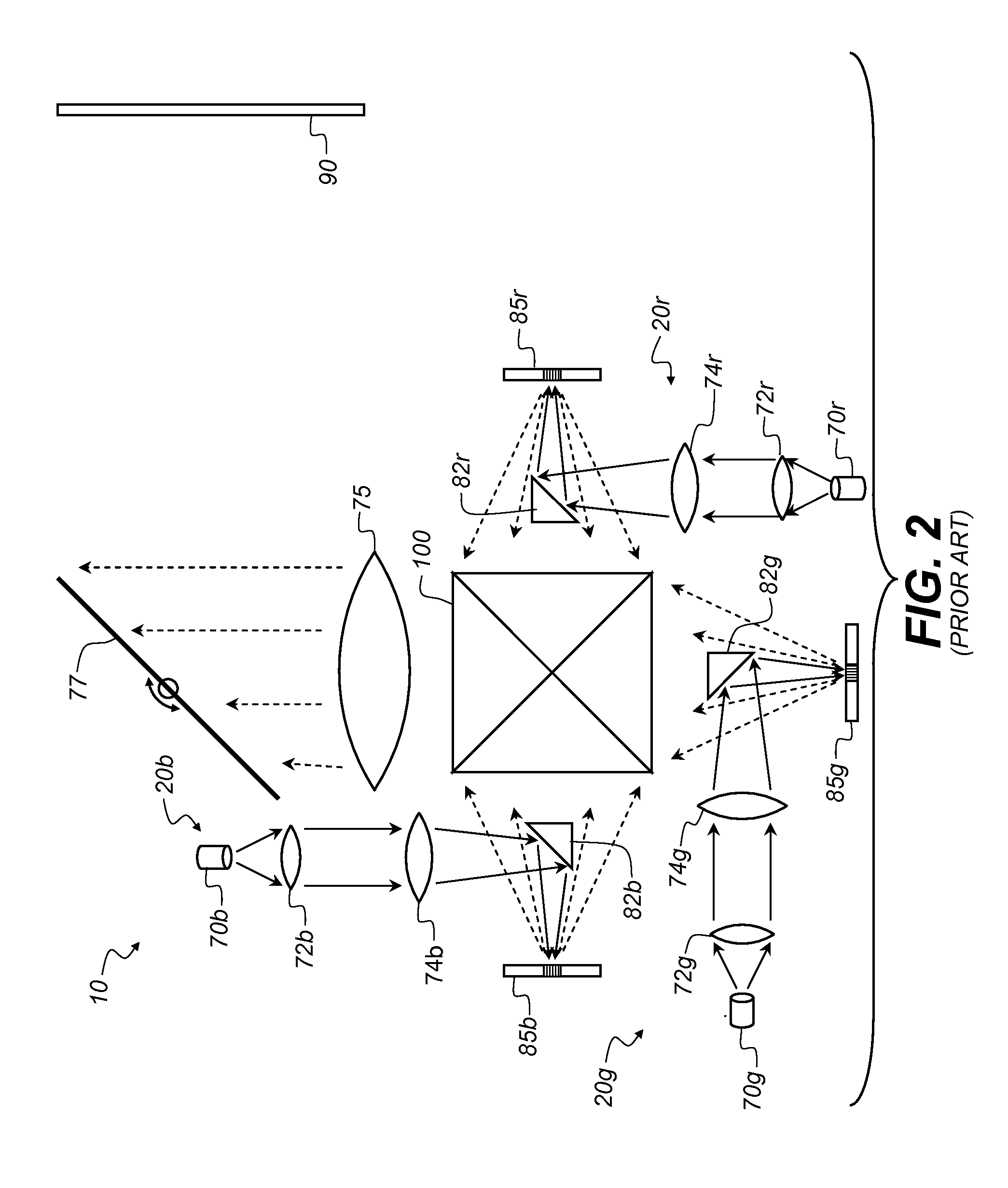Dynamic illumination control for laser projection display
a technology of dynamic illumination control and laser projection display, which is applied in the field of dynamic illumination control of laser projection display, can solve the problems of difficult to increase c/r, add significantly to the cost of the projection system, and the mechanical iris of the '314 disclosure must be a high-speed device, so as to reduce the stray light on the screen, improve image contrast, and eliminate hysteresis
- Summary
- Abstract
- Description
- Claims
- Application Information
AI Technical Summary
Benefits of technology
Problems solved by technology
Method used
Image
Examples
Embodiment Construction
[0048]The present description is directed in particular to elements forming part of, or cooperating more directly with, apparatus in accordance with the invention. It is to be understood that elements not specifically shown or described may take various forms well known to those skilled in the art. Figures shown and described herein are provided in order to illustrate key principles of operation of the present invention and are not drawn with intent to show actual size or scale. Some exaggeration may be necessary in order to emphasize relative spatial relationships or principles of operation.
[0049]In the context of the present invention, a “dark region” in an image frame is an area of the image frame that contains a substantial number of pixels below a given threshold code value for darkness within an image. The definition of what constitutes a dark region in any particular case depends on a number of factors, including the type of imaging system and its data representation scheme, ...
PUM
 Login to View More
Login to View More Abstract
Description
Claims
Application Information
 Login to View More
Login to View More - R&D
- Intellectual Property
- Life Sciences
- Materials
- Tech Scout
- Unparalleled Data Quality
- Higher Quality Content
- 60% Fewer Hallucinations
Browse by: Latest US Patents, China's latest patents, Technical Efficacy Thesaurus, Application Domain, Technology Topic, Popular Technical Reports.
© 2025 PatSnap. All rights reserved.Legal|Privacy policy|Modern Slavery Act Transparency Statement|Sitemap|About US| Contact US: help@patsnap.com



